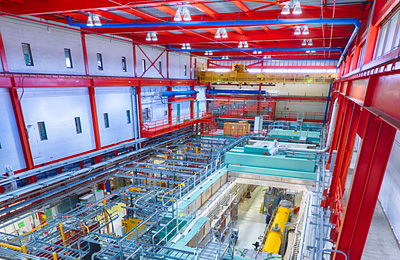Fermilab Accelerator Science and Technology Facility

The Fermilab Accelerator Science and Technology (FAST) Facility is America's only test bed for cutting-edge, record high-intensity particle beams and for accelerator research aimed at intensity frontier proton accelerators. FAST will also be unique in the United States as a particle beam research facility based on superconducting radio-frequency technology, on which nearly all proposed future accelerators in the world are based.
The science enabled by FAST is driven by these important areas of research:
High-intensity beams
Future high-intensity-beam experiments require powerful accelerators with precise control of beam losses and mitigation of beam-intensity-limiting phenomena. FAST's Integrable Optics Test Accelerator (IOTA) ring enables the study and exploration of new methods for overcoming intensity-limiting phenomena in accelerators. IOTA, 40 meters in circumference, operates with electrons; it will eventually operate with protons as well. It also employs novel magnet technology for nonlinear beam accelerators and innovative techniques to compensate for detrimental beam dynamics effects.
Superconducting radio-frequency accelerators for discovery
Nearly all future particle accelerators for discovery science, whether in the near or far term, will be based on superconducting radio-frequency accelerators. FAST brings together state-of-the-art SRF technology and beam-based systems in prototypic conditions, enabling a host of studies of direct relevance to the accelerator-based user facilities of the future.
Novel radiation sources
The demand for radiation sources spans discovery science, national security and industrial applications. The unique combination of high-energy, high-peak-power and average-power, and high-brightness electron beams available at FAST will enable exploration of new techniques in the generation of high-brightness photon beams spanning the range from from keV to tens of MeV.
When fully constructed, the FAST linear accelerator will consist of an electron photoinjector, accelerating cavities, a bunch compressor and one 1.3-GHz ILC-type cryomodule with the total output energy of approximately 300 MeV. It will deliver 1-millisecond-long bunch trains with up to 3,000 bunches per train. It will also deliver up to five pulses per second, providing high beam power and high average brightness. Based on ILC technology, FAST is capable of providing exceptional beam stability.
Learn more about FAST.
- Last modified
- 08/29/2018
- email Fermilab

